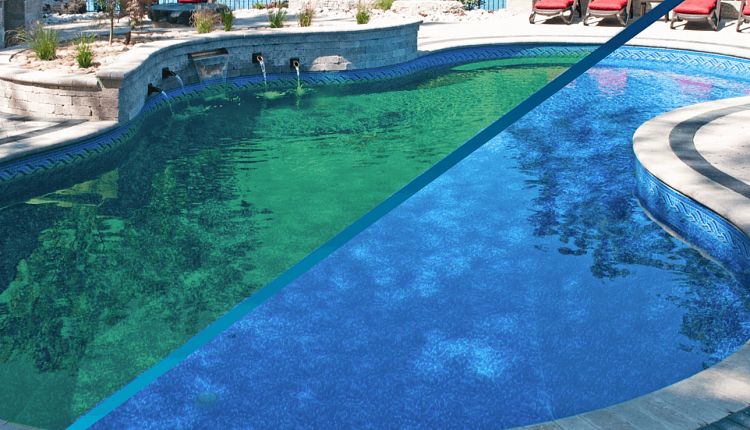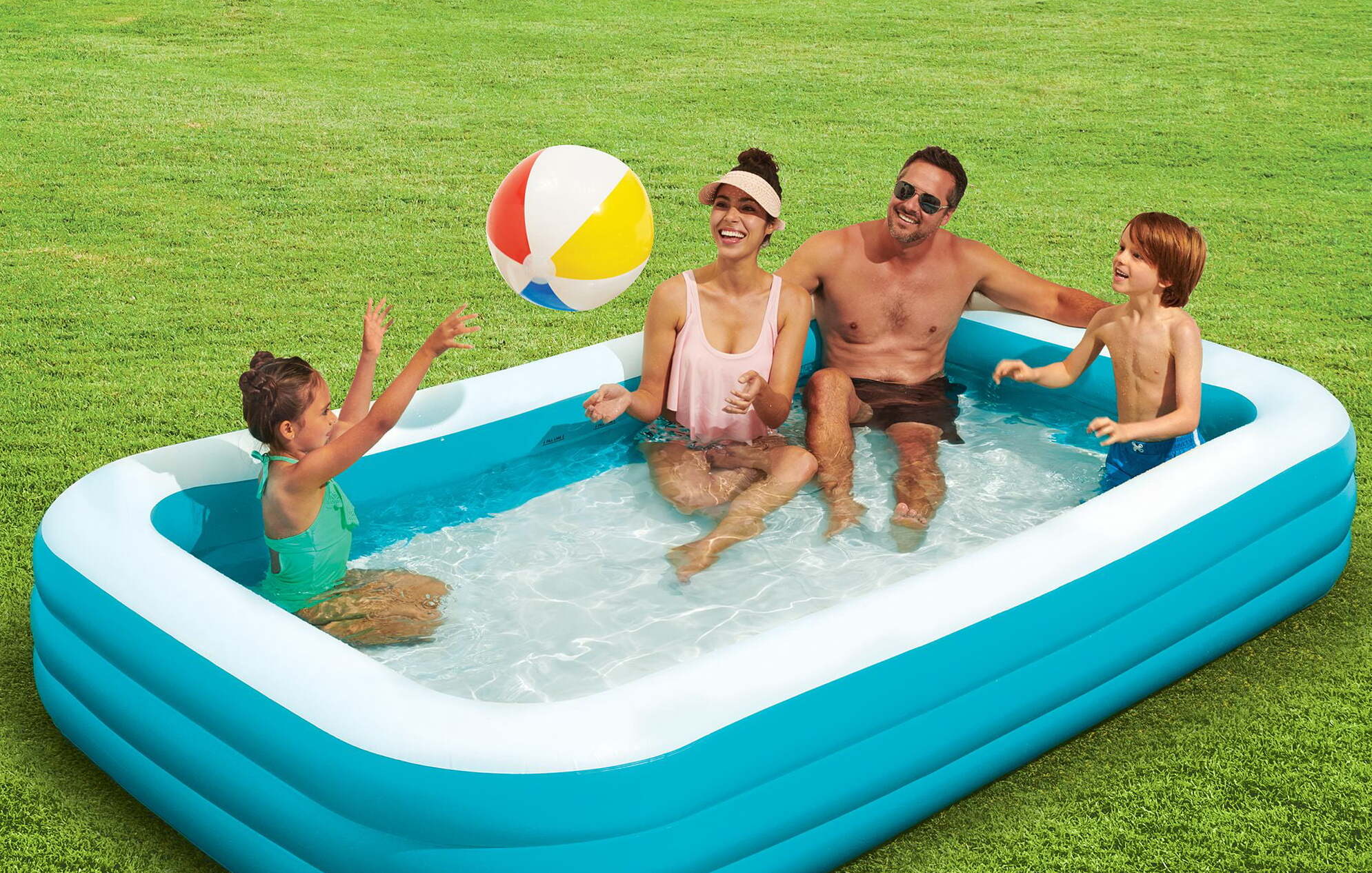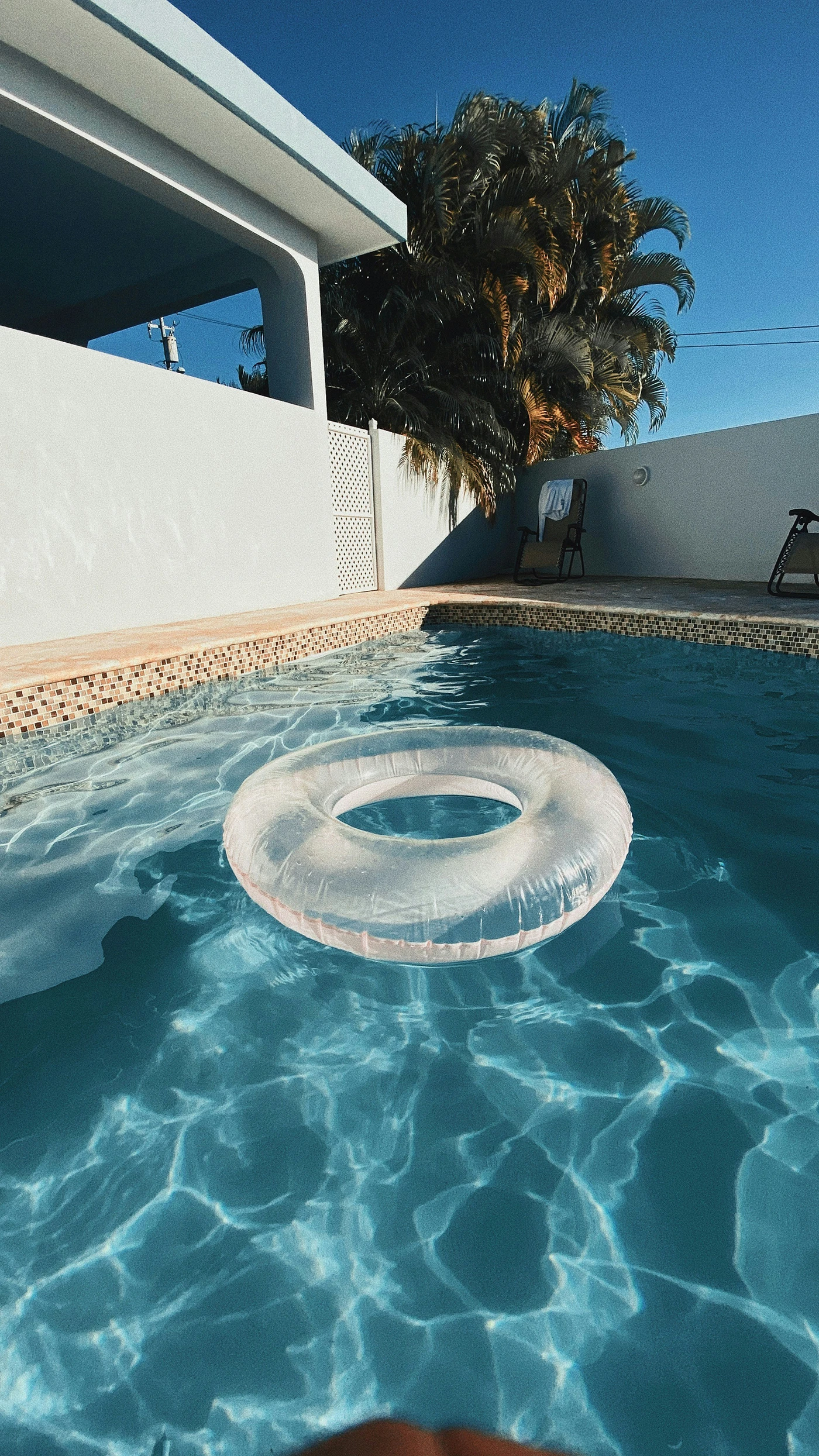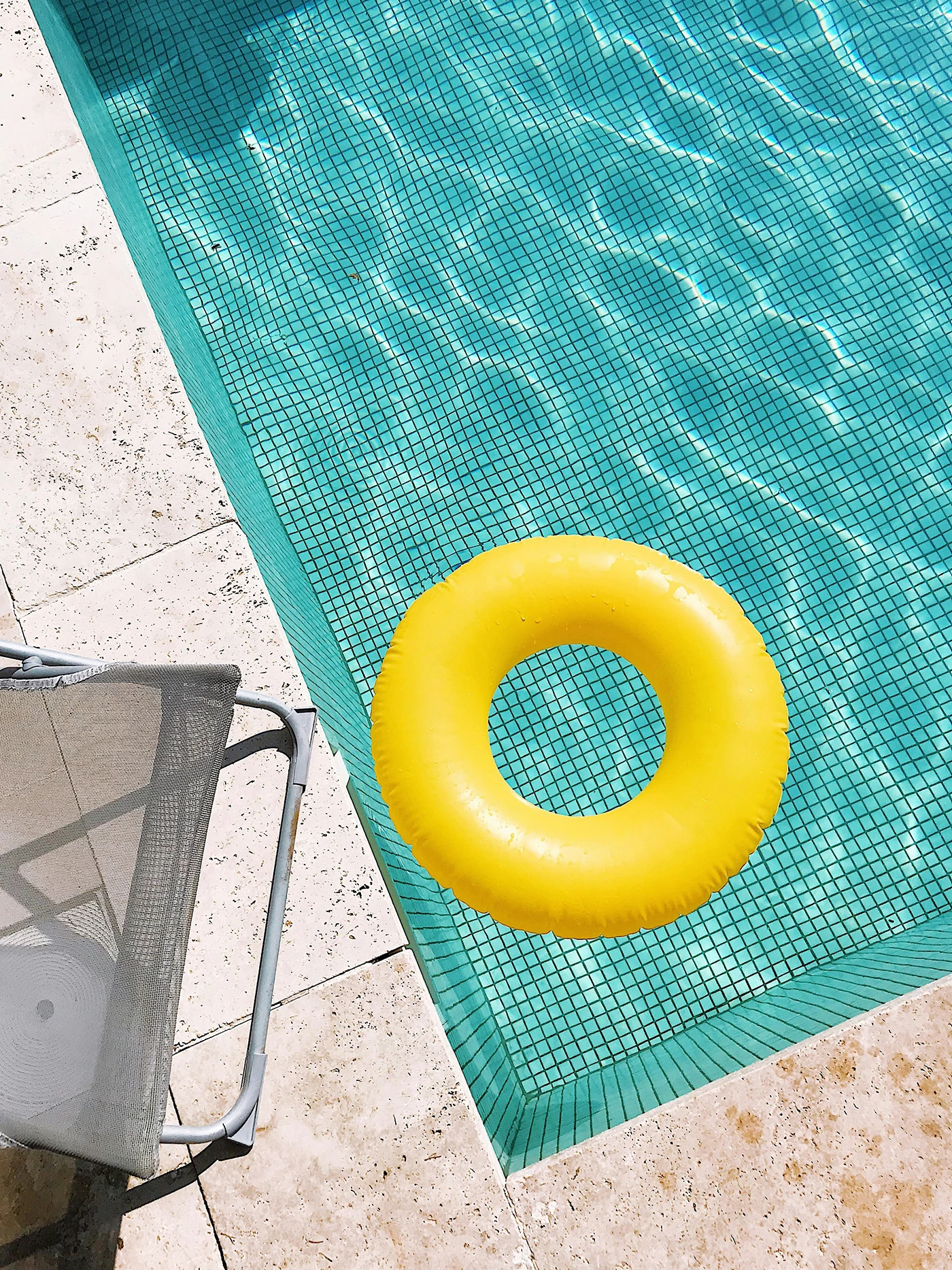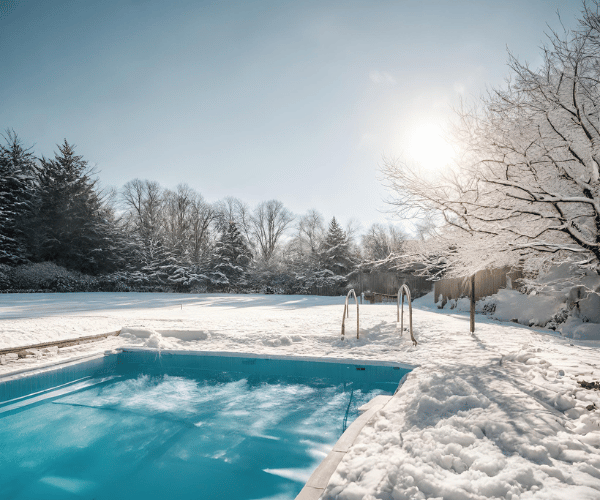
Highlight Summary
In this guide, we will be discussing the essential steps to winterize your above ground pool. The process involves timing your pool winterization correctly, preparing your pool with thorough cleaning and water filtration, using essential chemicals, draining equipment, and installing a cover. Following these steps will not only protect your pool during the cold winter months but also save you time and money when spring comes around. Let’s dive in and learn how to properly winterize your pool to ensure its longevity and your enjoyment.
Key Takeaways
- Time your pool winterization for optimal health and safety
- Prepare your pool with thorough cleaning & water filtration
- Use essential chemicals, drain equipment, install cover & follow additional tips to protect all season long!
Timing Your Pool Winterization
The timing of pool winterization is of great importance. So, when is the perfect moment to start this process? The answer is when the temperatures consistently drop below 65°F. Waiting for this temperature drop allows you to maintain clear and infestation-free pool walls. Closing the pool too early could result in algae growth and make re-opening the pool a more laborious task. Also, winterizing chemicals will not be as effective later on in the winter season if you winterize an above ground pool too early. Therefore, using a pool closing kit at the right time is crucial.
If you leave your pool uncovered during winter, you’ll have an exciting challenge ahead of you come spring. You’ll need to clean out your pool, rebalance the water, and maybe even tackle some freeze damage to the pool liner. To avoid these issues, continuing with filtering, testing, and balancing the water until you’re ready to close the pool is necessary. Act now to get the work done before the temperature dips to 32 degrees Fahrenheit for ground pools. Additionally, consider using pool antifreeze to protect your pool plumbing from freezing temperatures.
Preparing Your Pool for Winterization
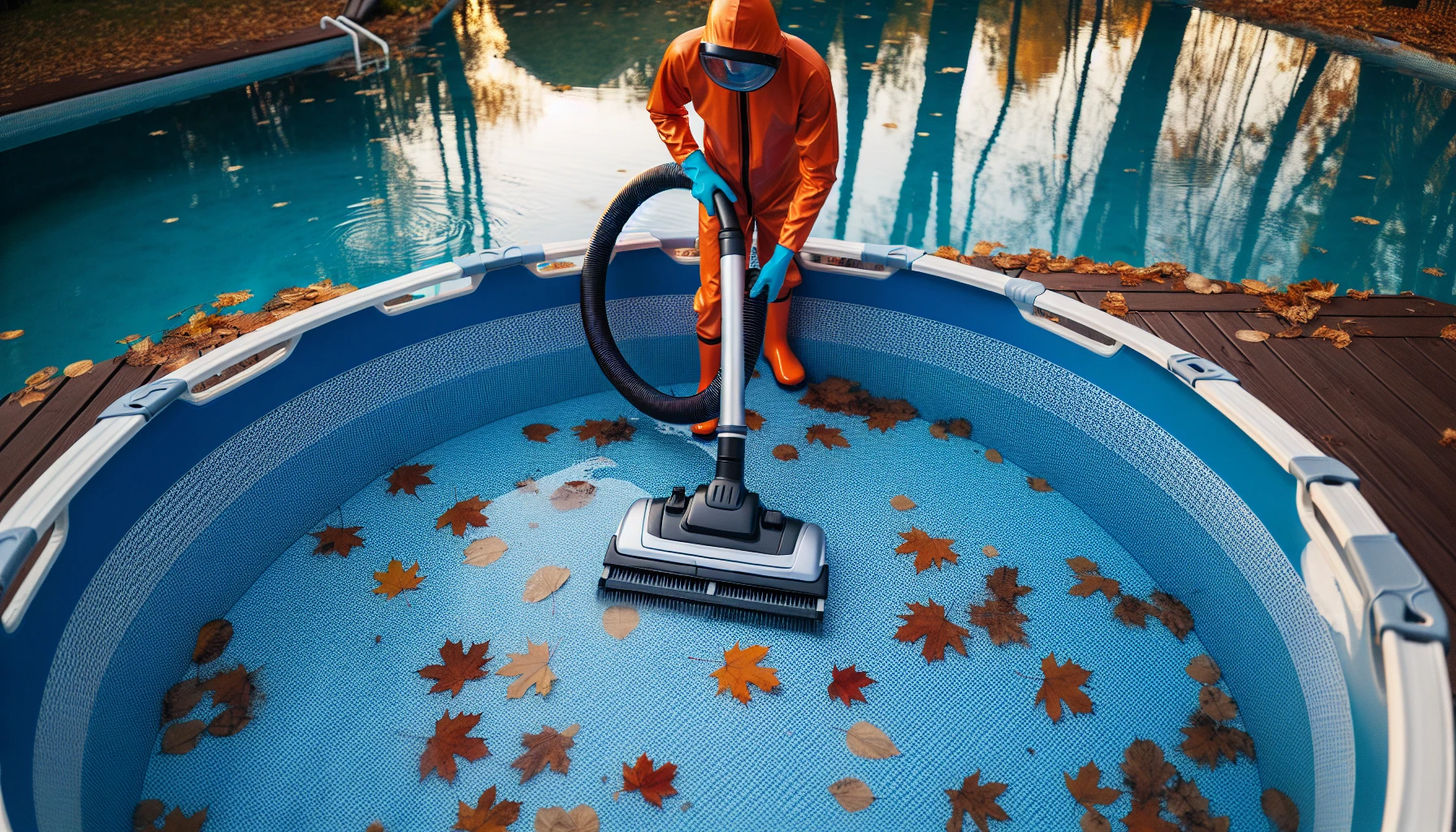
It’s necessary to prepare your pool with an exhaustive cleaning before initiating the winterization process. Here are the steps to follow:
- Remove leaves and other large debris with a leaf rake or pool skimmer.
- Brush all pool surfaces to get rid of any dirt and grime.
- Vacuum any remaining dirt and debris from the pool floor.
To winterize your above ground swimming pool, ensure it is sparkling clean with an efficient pool pump and a pool vacuum, ready for the winterizing process.
Next, remove all floating toys and pool equipment such as ladders from in or around the pool and store them indoors in the garage or a shed for safekeeping. Removing accessories before winterizing the pool helps to protect them and the pool itself from damage, punctures, rust, and corrosion, which can lead to water contamination and serious hardware issues.
Finally, operate your pool filtration system and shock the pool water a few days prior to closing it, and cleanse the pool filter after the pump has been operating for at least eight hours. Consider using a pool closing kit to ensure your pool is properly winterized.
Adjusting Water Chemistry for Cold Months
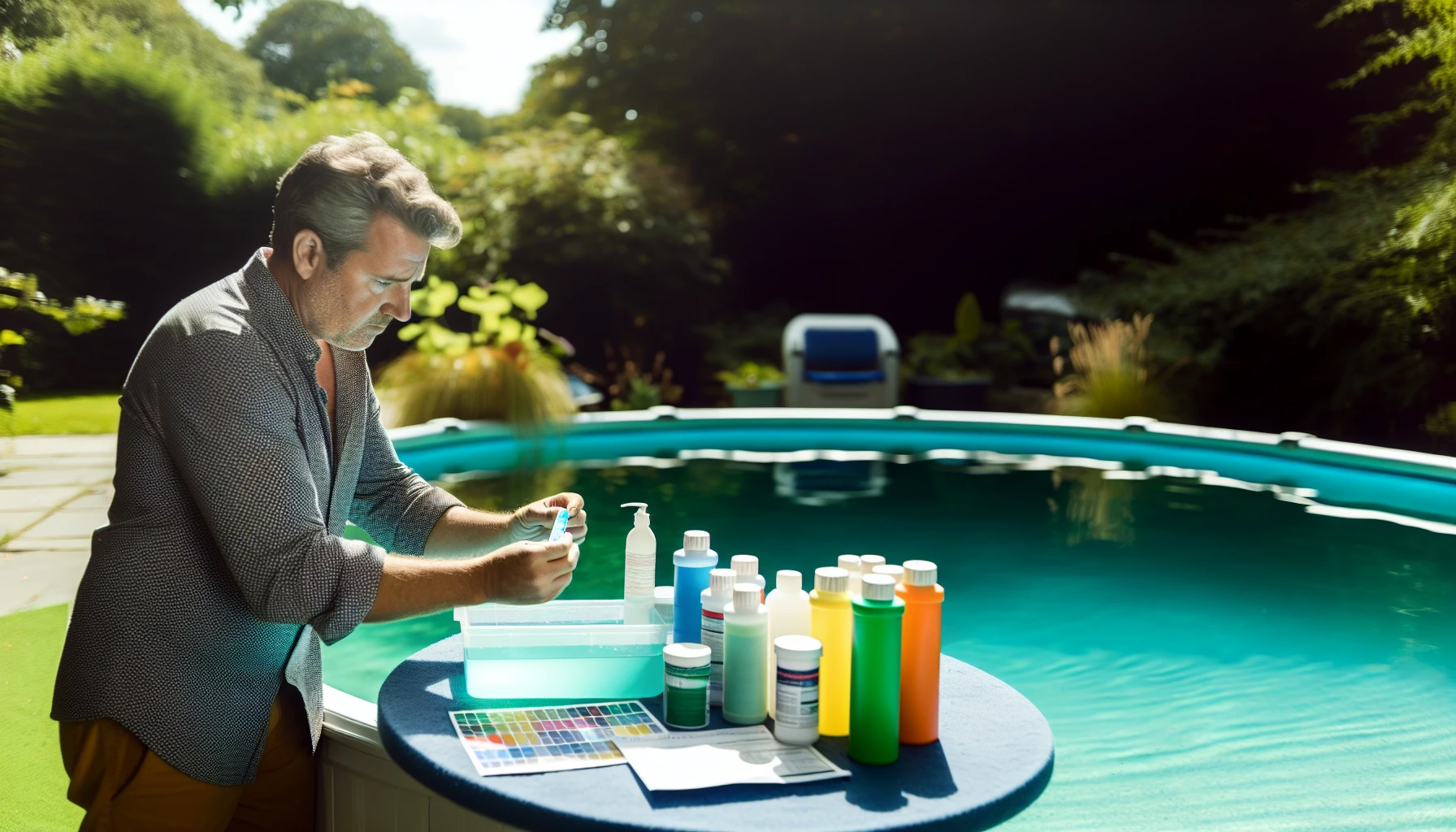
Testing and adjusting the water chemistry is a key step before winterizing your pool. A week before closing is ideal to ensure your pool is properly prepared for the winter season. Here are the recommended levels for optimal pool winterizing:
- pH: 7.4 to 7.6
- Alkalinity: between 100 ppm and 150 ppm (125 ppm ideal)
- Calcium hardness: between 175 ppm and 225 ppm
- Chlorine: between 1 ppm and 3 ppm
A healthy water balance during winterization can be achieved by maintaining the optimal pH level in pool water. By having clear and properly balanced water during winter, you can ensure a successful start to the spring season. To keep your pool water free of stains and scaling during winter, adding MetalFree and Leslie’s Stain and Scale Remove products can help.
Using a pool closing kit can further ensure your pool is ready for winter.
Essential Winterizing Chemicals
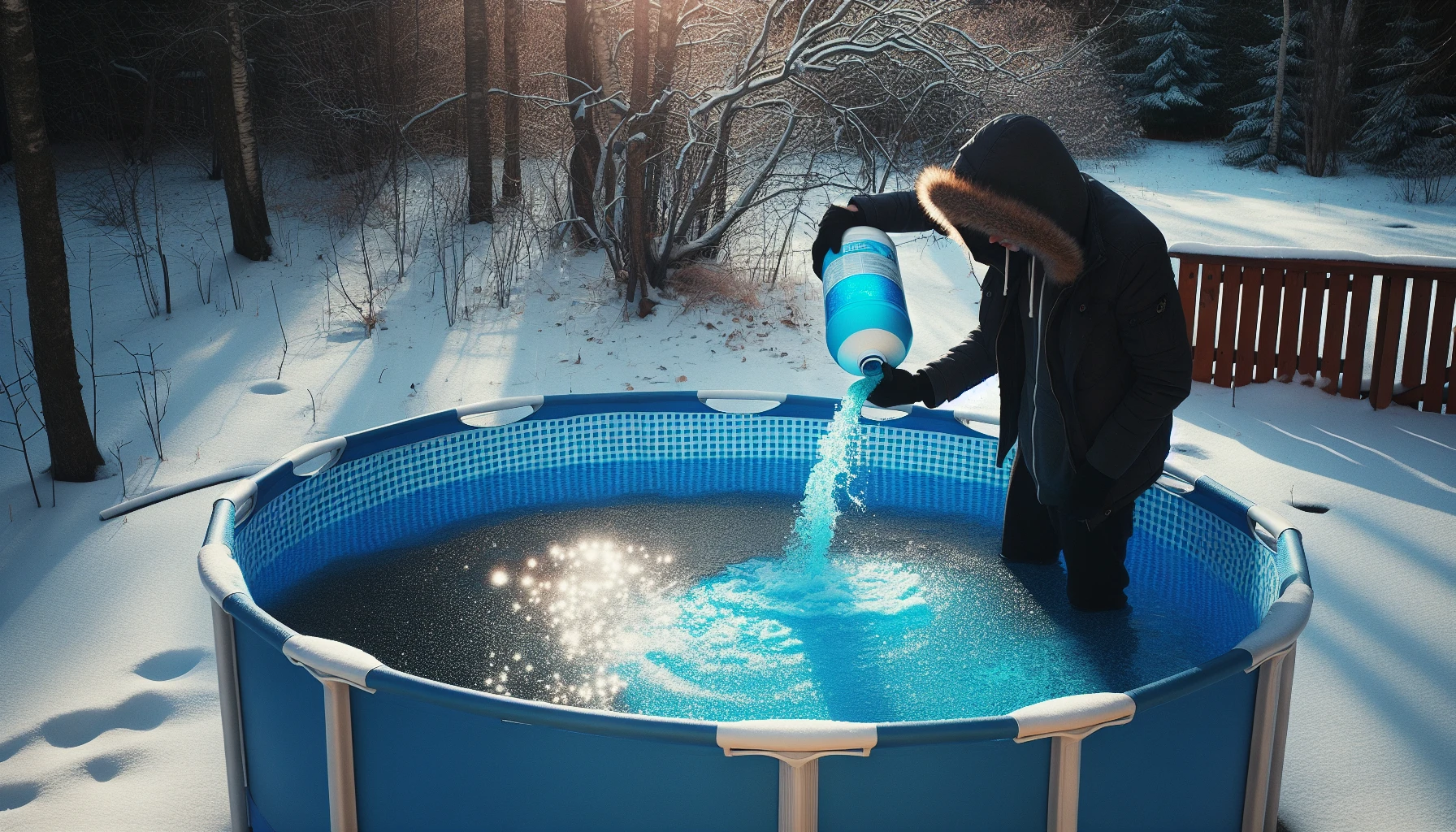
Including necessary winterizing chemicals such as pool shock, algaecide, and enzyme treatments will assist in maintaining your pool’s condition throughout the season. These chemicals not only ensure your pool water remains clean and clear throughout the winter but also safeguard against algae and bacteria growth, keeping your pool looking great and safe for swimming.
To add winterizing chemicals, follow the manufacturer’s instructions. Use one bag (or pound) of pool shock per 10,000 gallons of pool water. Algaecide and a clarifying enzyme treatment can come in a bottle or a convenient ball or “pill” that can be punctured and added to the water. By taking care of the pool’s water chemistry, you’ll avoid a lengthy and expensive spring clean-up, saving time and money in the long run.
Consider using a pool closing kit to ensure you have all the necessary chemicals for winterizing your pool.
Draining and Protecting Pool Equipment
Draining and safeguarding your pool equipment like the pump, filter, and heater is a necessary measure to avoid damage from freezing temperatures. For above ground pools, aim to keep the water level 4” to 6” below the skimmer. Never drain your above ground pool completely, as it can cause your vinyl liner to dry out, leading to a shorter life expectancy.
When winterizing your pool equipment, follow these steps:
- Remove and store the filter in a secure, dry place.
- Set the multiport valve to “Winterize” when using sand filters. Additionally, remove the drain plug at the bottom for the filter to be completely drained.
- For cartridge filters, drain them, give them a good rinse with a hose, leave the valves open, and store the cartridge indoors for the winter.
By properly draining and protecting your pool equipment, you’ll ensure a smooth spring opening and prevent costly damage. Additionally, consider using pool antifreeze to further protect your pool plumbing from freezing.
Managing Pool Lines and Accessories
Managing pool lines, accessories, and fixtures appropriately is necessary to avoid freezing and cracking in winter. Here are some steps to follow:
- Remove the skimmer basket from your pool.
- Return any fittings, solar blankets, pool alarms, ladders, or steps and pool cleaners.
- Store these items in a dry, warm location to ensure they stay in the best condition possible.
To safeguard your above ground pool during winterization, follow these steps:
- Secure the inlet fitting with a winterizing plug for maximum protection.
- Securely install a #9 winter pool plug or threaded 1.5’’ plug with o-ring on the inside of the pool.
- Disconnect the hose and drain it completely dry.
- Drain, suck, or blow water out of PVC pipes, or add antifreeze if needed, to keep your PVC pool pipe in great shape during winter. Don’t forget to check all the drain plugs for proper sealing.
Using pool antifreeze can provide additional protection for your pool lines during the winter months.
Installing the Winter Pool Cover
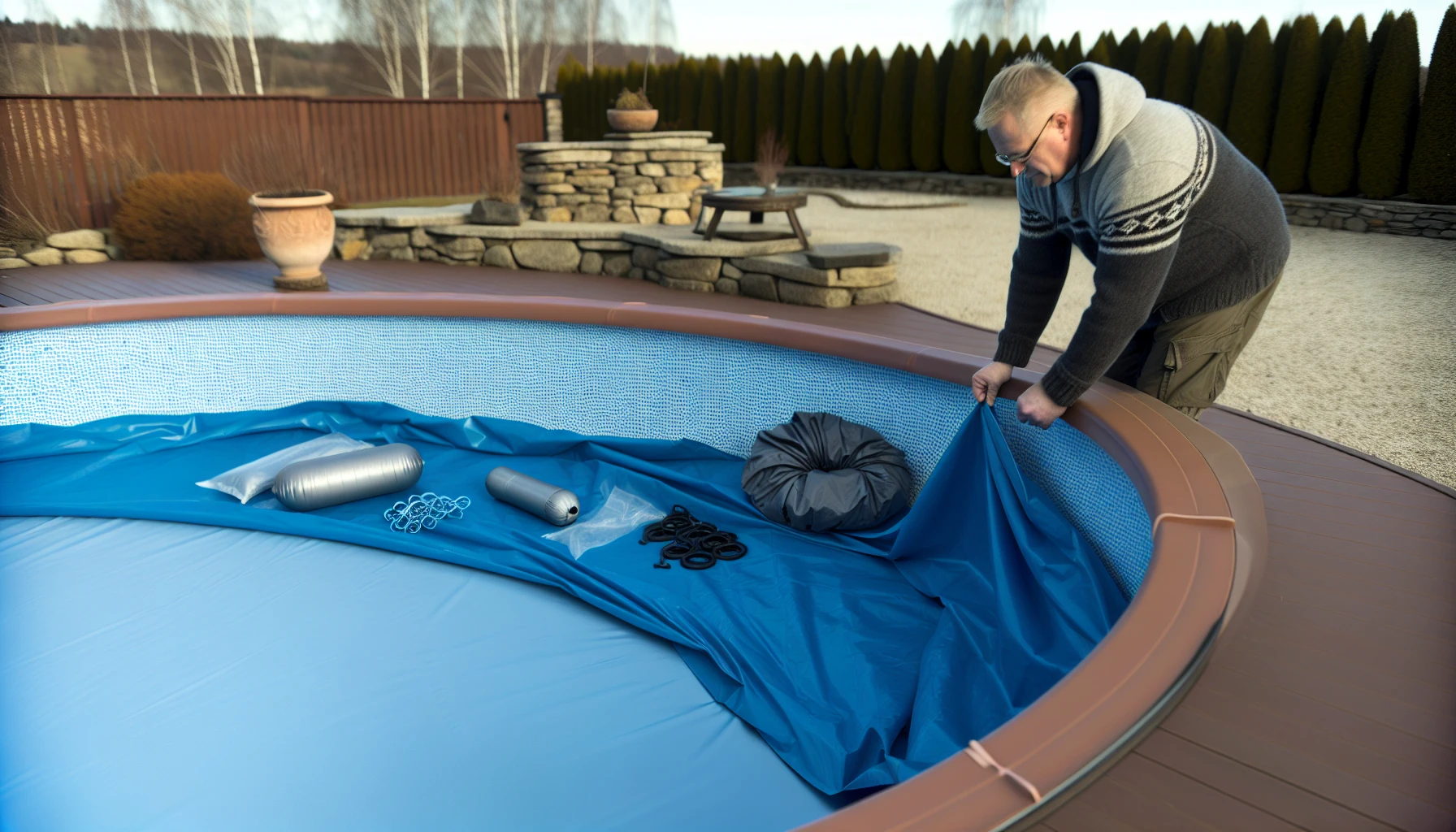
The installation of a winter pool cover is necessary for protecting your pool from debris, ice, and snow damage during the winter months. Here’s how to install a winter pool cover:
- Cover the pool with a winter cover.
- Secure it with the included cable and winch assembly. This will complete the installation of the winter cover.
- If necessary, use an air pillow to further protect your pool.
- Inflate the air pillow to around 50% or 60% of its capacity, allowing it to compress without immediately popping after the first substantial snowfall.
Secure the air pillow in the middle of the pool using a thin rope or an accessory designed to center the pillow automatically for maximum efficiency. To extend the life of the pool air pillow, seal the seams and valves with duct tape after it has been inflated.
A well-installed winter pool cover, along with an air pillow, will protect your pool and its pool wall, making spring opening much easier. Consider using a pool closing kit to ensure your pool is properly winterized.
Additional Winter Protection Tips
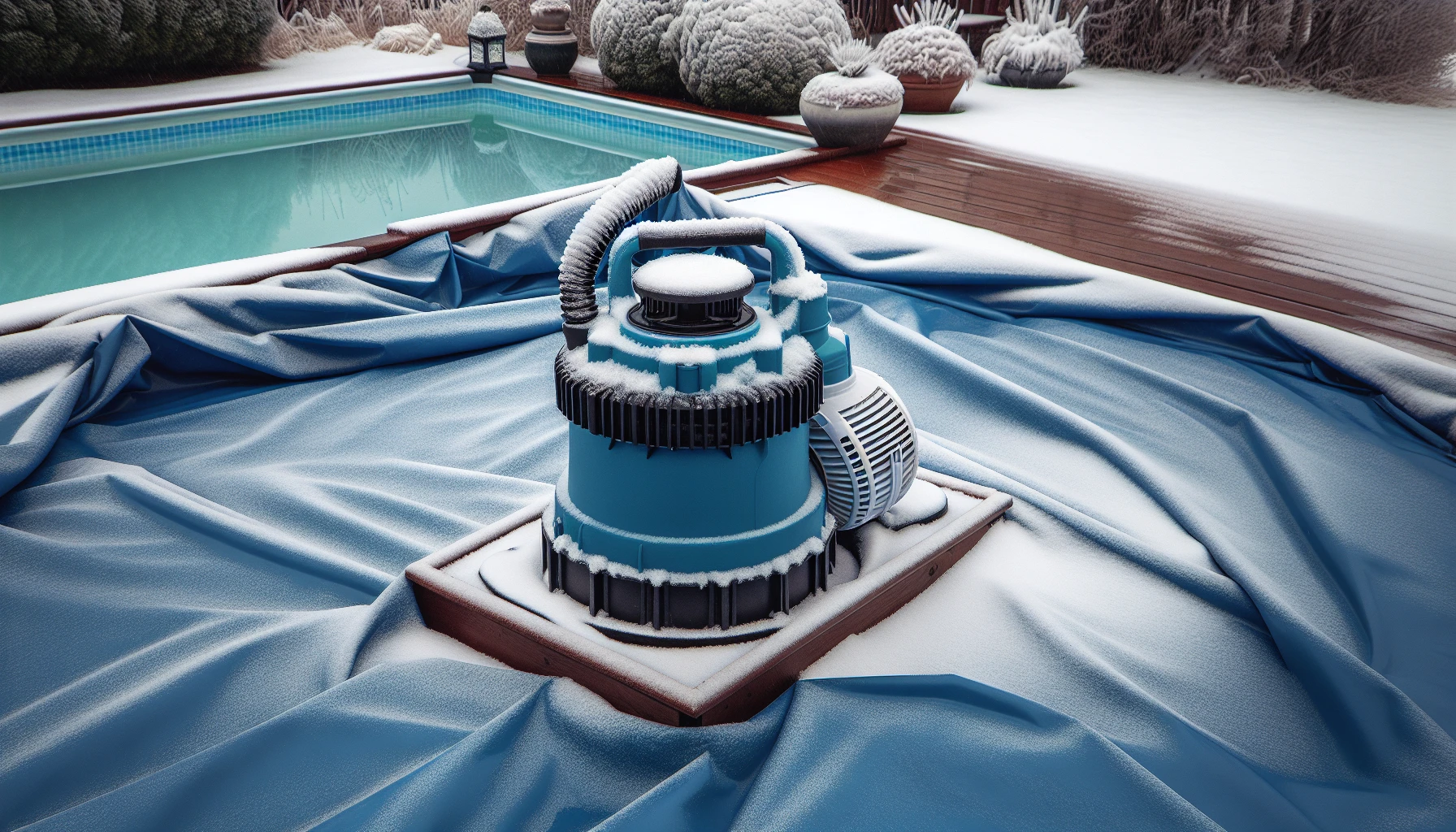
Following additional winter protection tips is necessary, even after winterizing your pool. One crucial tip is using a pool cover pump to remove excess water and snow from the cover, ensuring your pool is safe and secure all winter long. This simple step can prevent damage to your winter cover and make it easier to remove when it’s time to open your pool.
Regularly inspect your winter pool cover for damage or wear at least once per month during the off-season. If you notice any issues, address them promptly to ensure your pool stays protected.
Don’t forget to bring a water sample to your local Leslie’s for a complimentary AccuBlue® water analysis and professional recommendations to keep your pool at its best.
When to Open Your Pool Back Up
As the chilly winter months recede and temperatures start to climb, it’s time to start thinking about reopening your pool. Ideally, you should plan to open your pool when temperatures consistently rise above 65°F, signaling the return of the swim season. This temperature threshold allows for the proper adjustment of water chemistry and facilitates a smooth transition back into the swim season.
When it comes to reopening your pool, it’s essential to follow the steps outlined in Section 10. These steps are designed to ensure a successful pool opening, minimizing any potential issues that could arise. By diligently winterizing your pool and taking the necessary steps during the opening process, you can ensure a clean and healthy swimming environment. This means you and your family can enjoy a refreshing dip all summer long, without any worries about pool safety or cleanliness.
The process of reopening your pool is just as important as winterizing it. It’s not simply about removing the cover and jumping in. It requires careful planning, maintenance, and a deep understanding of your pool’s unique needs. So, as
Summary
In conclusion, properly winterizing your pool is an investment in its longevity and your enjoyment. By following this step-by-step guide, you’ll protect your pool from the harsh winter elements and ensure a hassle-free spring opening. From timing your pool winterization to balancing water chemistry and protecting your equipment, each step plays a crucial role in keeping your pool in top shape during the cold months.
So, as the temperatures drop and you prepare to close your pool for the season, rest assured that you have the knowledge and tools needed to winterize your pool like a pro. With careful planning and diligent maintenance, you’ll be ready to dive back into your sparkling clean pool when the warm weather returns.
Frequently Asked Questions
What is the best way to winterize an above ground pool?
To winterize your above ground pool, balance the water and put away the accessories, vacuum the pool and add winterizing chemicals, adjust the water level, ready the pump and filters, protect your return and skimmer, prepare for hibernation, and set up an ice equalizer pillow before covering the pool.
Can I leave my above ground pool up all winter?
Yes, some above ground pools can stay up year round, depending on the type of pool you have. Dismantling it for winter might be more hassle than it’s worth.
How far down do you drain your above ground pool for winter?
Lower the water level around 4″ to 6″ below the skimmer when winterizing your above ground pool – this can be done with a submersible pump or by siphoning the water out with a garden hose. Don’t lower the water further or you’ll risk damaging your vinyl liner.
When is the best time to winterize my pool?
Winterize your pool when temperatures consistently drop below 65°F for the best protection.
How can I properly clean my pool before winterizing?
Take the necessary steps to ensure your pool is clean before winterizing – remove leaves and debris with a skimmer net, brush all pool surfaces, and vacuum the pool floor.
Tools necessary for winterizing
- Pool Cover: Protects your pool from debris and harsh weather conditions.
- Pool Vacuum: Helps in deep cleaning the pool before winterization.
- Pool Chemicals: Essential for maintaining water balance and preventing algae growth.
- Pool Skimmer: Essential for removing leaves and other debris from your pool before winterizing.
- Pool Cover Pump: Used to remove excess water and snow from the pool cover.
In Summary!
This guide provides a comprehensive approach to winterizing your above-ground pool, emphasizing the importance of timing, thorough cleaning, water chemistry adjustment, and the use of essential winterizing chemicals. It also highlights the necessity of draining and safeguarding pool equipment, managing pool lines and accessories, and installing a winter pool cover to protect the pool from winter damage. Regular inspection of the pool cover during the off-season and reopening the pool when temperatures rise consistently above 65°F are crucial for maintaining a clean and healthy swimming environment.

